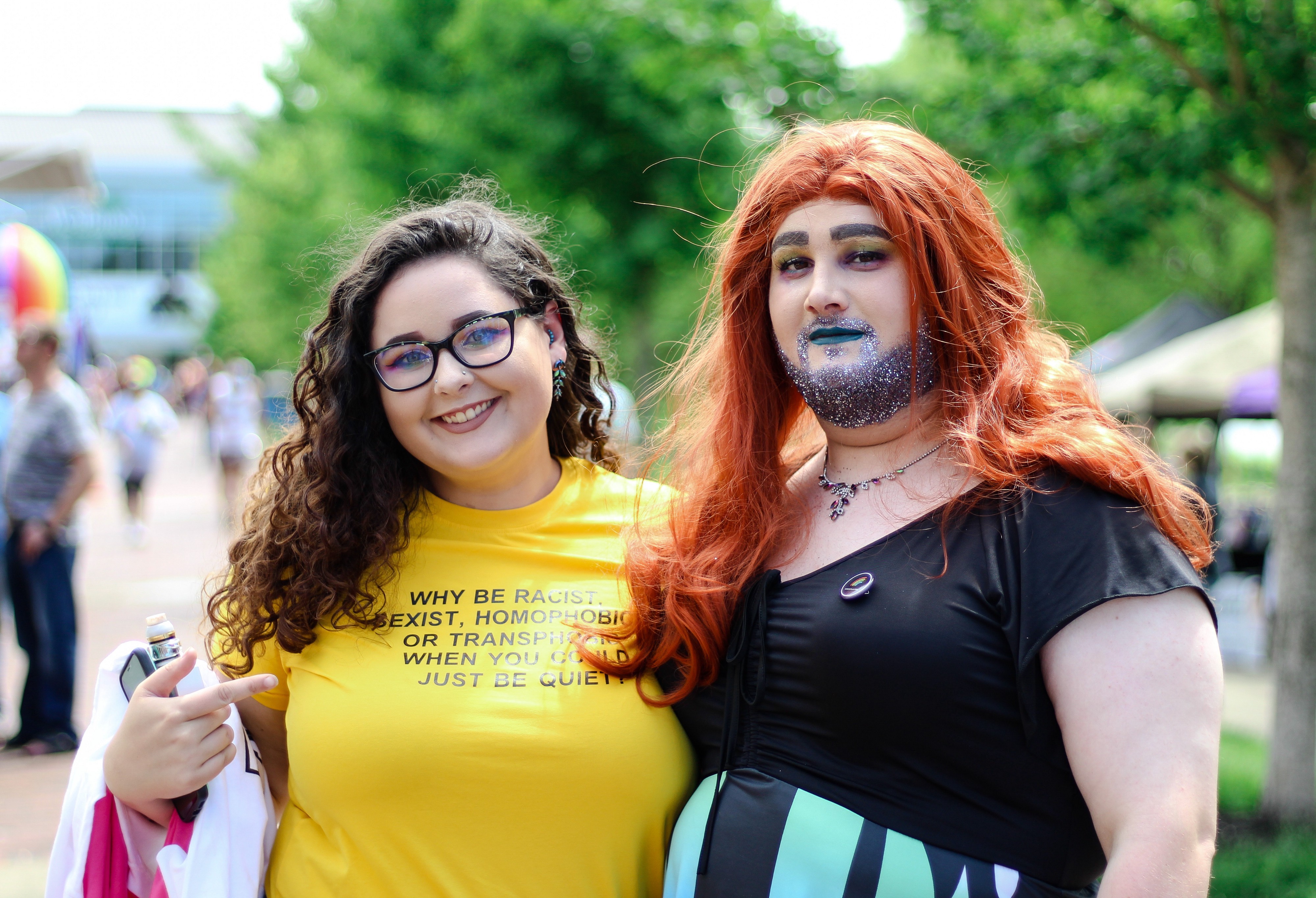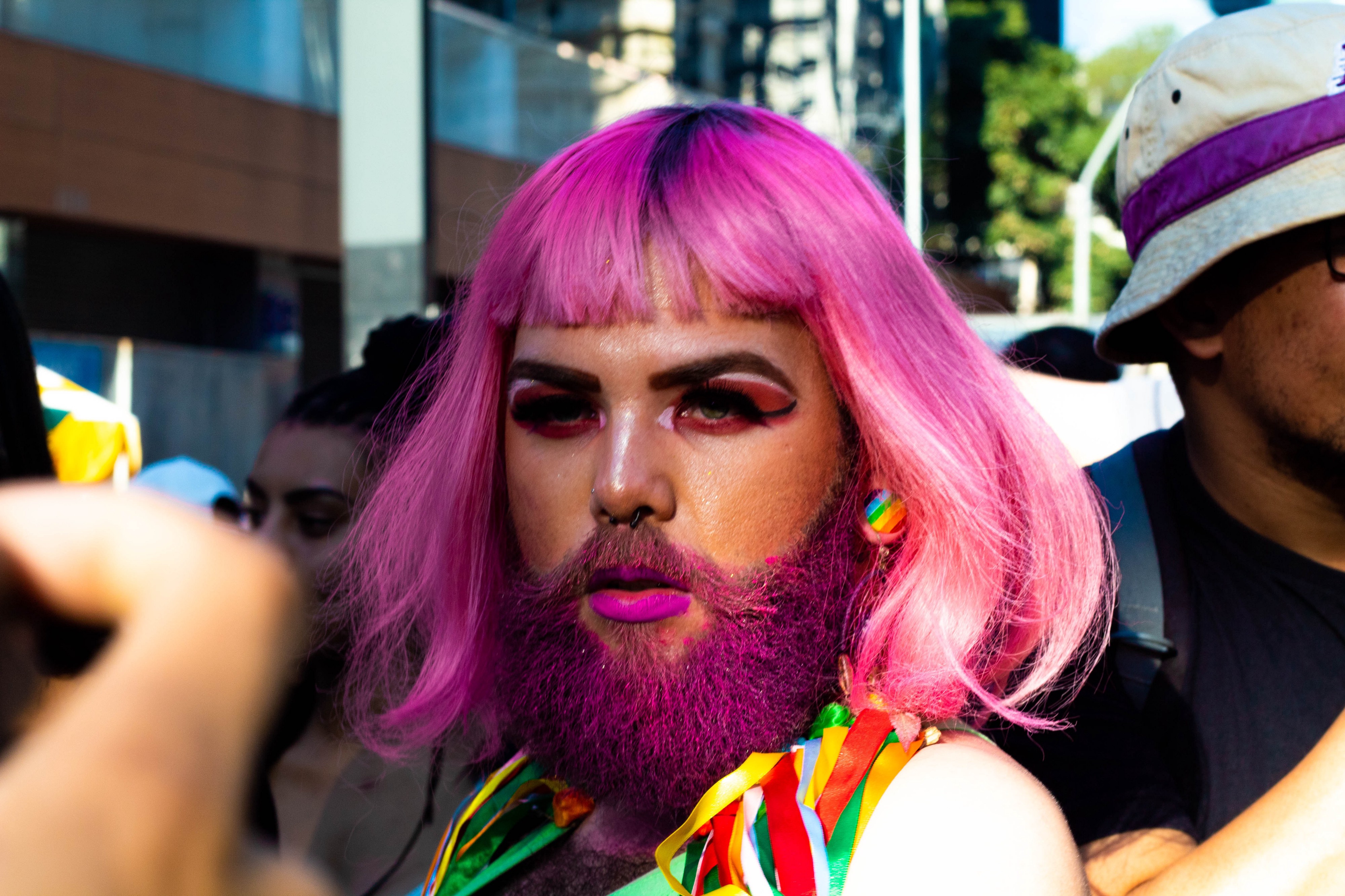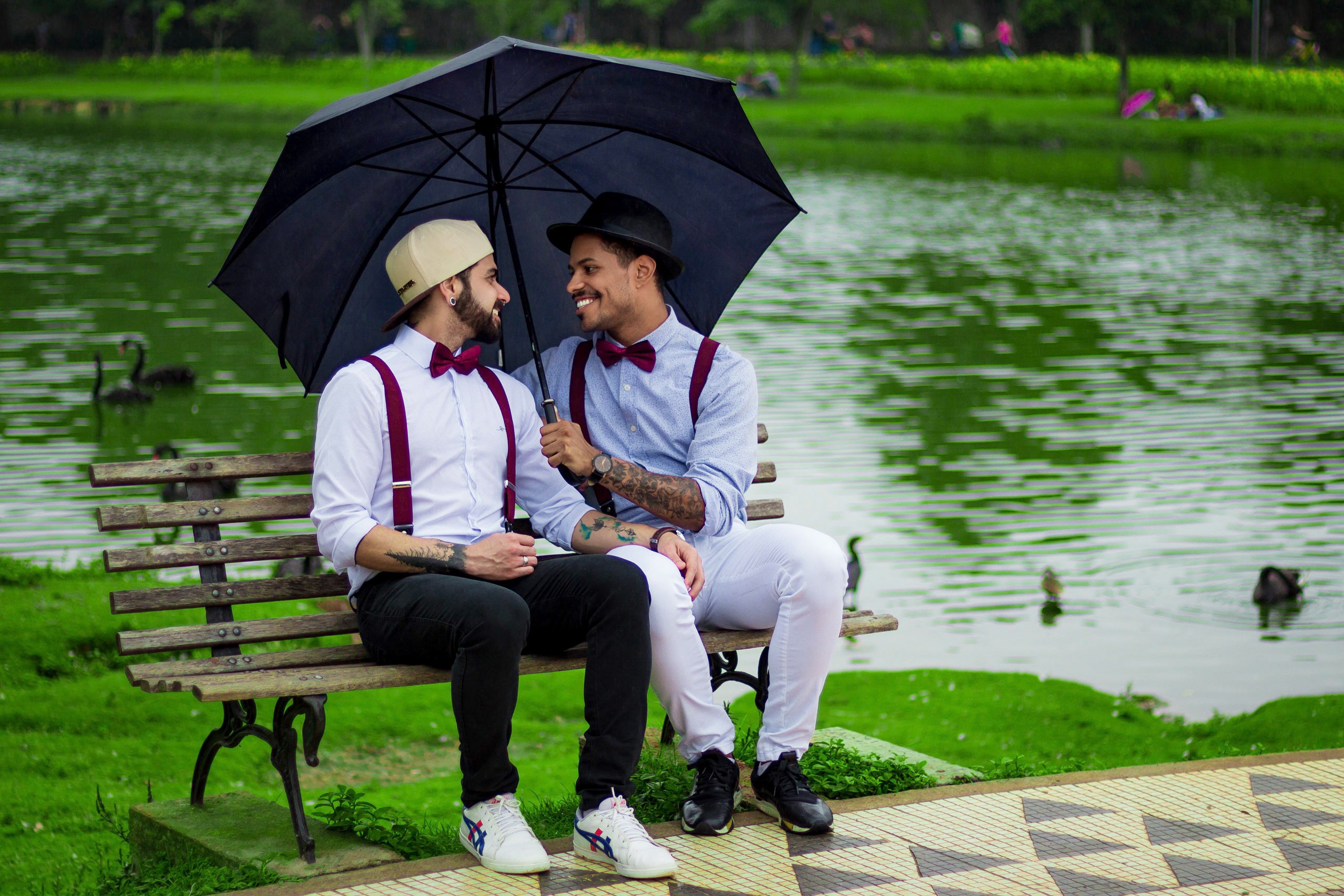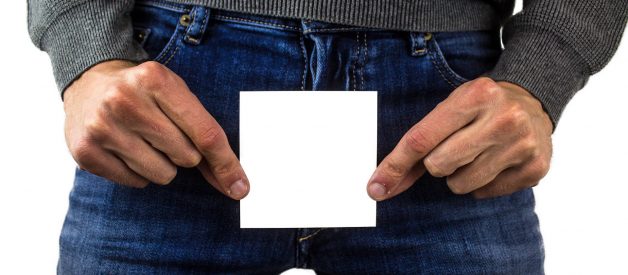In response to a piece I recently published on Medium (?Are Gay Men Cisgender??) a self-identified transman related the following experience at a gay nightclub:
 https://medium.com/@kaig/while-dancing-with-a-gay-man-at-a-night-club-i-decided-i-better-tell-him-im-trans-before-he-found-cb4fe479f8d7
https://medium.com/@kaig/while-dancing-with-a-gay-man-at-a-night-club-i-decided-i-better-tell-him-im-trans-before-he-found-cb4fe479f8d7
When I read this comment I was reminded of the many social media posts I?ve read about discrimination against transgender people on gay men?s ?dating? apps. Some users block all transgender users in advance, refusing to consider them as romantic or sexual partners. Others state outright ?no trans? or similar in their profiles.
Alongside the high level of violence against trans people, such experiences have contributed to an ongoing debate about when to disclose a transgender identity to prospective partners. In a dating app profile? During a first or second date? Only when a relationship gets serious or physical? There seems to be no perfect answer. All options entail risk.
So, when I read the above response, I was saddened. But I wasn?t exactly surprised.
I know some gay men are happy to consider transmen as possible romantic and sexual partners but they?re a real minority. One 2018 study found only about 12% of gay men, 29% of lesbians, and 48% of bisexual/queer/non-binary people say they?d be willing to date a transgender partner. Even with those dismal numbers, transmen were seen more favorably than transwomen, even when that seemed to contradict a respondent?s sexual orientation (i.e. lesbians preferring transmen over transwomen as partners). The researchers attributed these results partly to ?transphobia.?
But, where gay men are concerned, I?m not sure that?s the whole story.
 Image by Darko Djurin from Pixabay
Image by Darko Djurin from Pixabay
Academics have long been interested in transgender people because their existence and experiences reveal unspoken truths about how gender ?works? in society.
Though gendered behaviors, identities, and appearances are highly regulated in society, the specifics of those regulations are rarely expressed directly. Rather, social norms regarding gender become known when they?re violated. It?s in the breach that many taken-for-granted social rules about gender are revealed.
One of those unspoken truths is the expectation that everyone?s gender presentation correspond to their biological sex. Over the course of our lives, most of us have relatively little access to the direct evidence of other people?s biological sex ? their genitals, gonads, hormones, brain structure and function, and genetics.
Rather, we make assumptions about people?s sex on the basis of their outward appearance: their hairstyle, clothing, ornamentation, and secondary sex characteristics such as body hair and facial shape.
And in popular usage, ?sex? is often just shorthand for a person?s genitals. If someone ?looks like a man? we assume they are biologically male with male-typical genitals: a penis and testicles. But we?ll usually never know whether this assumption is accurate.
In this sense, gender has a recursive relationship to biological sex. Although many firmly believe gender presentation is the inevitable unfolding of biological sex, in daily interactions we make assumptions about a person?s sex solely on the basis of their gender presentation. Then credit their gender presentation to their biological sex, which remains largely unseen.
This act? called ?gender attribution? ? is so unconscious and automatic, we don?t give it any thought. It?s part of the everyday, interactive social ?theater? in which in individual gendered identities are constructed within society.
 Photo by Rosemary Ketchum from Pexels
Photo by Rosemary Ketchum from Pexels
But, unless they?ve had genital reconstruction surgery (sometimes also called gender affirmation or gender confirmation surgery), transgender people break this fundamental social rule about gender. Transgender people are those whose gender identity and often, gender presentation, doesn?t align with what?s expected for the sex they were labeled at birth.
Though they were labeled female or male at birth, they?ve come to identify as, respectively, men or women, and may choose to present a gendered appearance that aligns with that identity. But they don?t (by definition) have a biological sex that matches their identity and appearance. Even if they alter their bodies through surgery or hormones, some aspects of biological sex, like genetics and certain secondary sex characteristics, cannot be willingly changed.
Transgender people ? well, anyone really ? can be in for a lot of grief when it?s clear their outer gender presentation doesn?t match their biological sex in ways their society expects. Due to certain secondary sex characteristics ? facial hair and shape, Adam?s apple, brow ridge, height, etc. ? it?s potentially easier for transgender men (those labelled female at birth) to successfully present as men than for transgender women (those labelled male at birth) to successfully present as women ? but not always.
Accord between gender presentation and biological sex is so socially and culturally freighted that those who appear to be playing a gendered social role they aren?t ?entitled to? by virtue of their birth sex are often viewed as engaging in a disturbing social transgression, if not outright fraud or deception.
Which is not to say that transgender people presenting as a gender that matches their gender identity (rather than their assigned sex) are being in any way inauthentic. Nor is it their fault that the yardstick for authenticity is agreement between gender presentation and biological sex.
Like all of us, transfolk were born into a society that demands sex-gender accord despite a mountain of historical and cross-cultural evidence indicating great variability in both human sex and gender. The conflict is between the truth of transgender existence and the social rule that treats that truth like a lie.
 Photo by Matteus Bernardes from Pexels
Photo by Matteus Bernardes from Pexels
The expectation of sex-gender agreement is widespread but may be especially heightened among gay men and in predominantly-gay male social and digital spaces.
What binds gay men together as ?a people? is shared sexual attraction and desire for other men. Though some speak of ?same-gender loving men,? rather than gay men or male homosexuals, it is undeniable that, while gay men?s gender presentations are varied, there is still an unspoken expectation by gay-identifying men that other gay men are biologically male. More specifically, there is an expectation that gay men possess male-typical genitals ? a penis and testicles ? and some presence of male-typical secondary sex characteristics. At least in this one sense, gay male culture is deeply conservative. It presumes a correspondence between (gay men?s) gender presentations and their biological sex.
Though anal sex is undoubtedly the quintessential Gay Sex Act in the ?straight imaginary,? the penis is actually a much more potent sexual symbol in gay male culture. The mythical presence of a large, attractive, fully functioning male sex organ that can become erect, penetrate orifices, and project copious amounts of semen upon orgasm is central to gay male sexual desire, sexual behavior, and cultural representations. In this, gay culture is intensely phallocentric. It?s a culture oriented around the penis and its cultural representations.
This shouldn?t be news to anyone.
I also do not think it an exaggeration to claim that possession of, and desire for, male-typical bodies is at the center of gay male culture and the raison d?etre for most gay male social spaces and cultural practices. It is assumed but never explicitly stated that self-identified gay men ? transgender, agender, genderqueer, cisgender, etc. ? in predominantly-gay males spaces share this understanding.
For these reasons, it does not seem unreasonable to me that masculine- or male-presenting people in a gay bar or on a gay ?dating? app will be presumed to have male bodies with male-typical genitals. Those spaces have been created to facilitate social, romantic, and sexual connections between just such persons.
It?s why they exist. And why gay men go there.
 Photo by FransA from Pexels
Photo by FransA from Pexels
So, one of the reasons gay men might reject trans men as romantic or sexual partners is they break the unspoken social rule that gender presentations and physical bodies will correspond in ways that mirror our assumptions.
But also because they contradict the underlying rationale for gay men?s spaces: that they?re primarily organized for the benefit of those who possess and desire male-typical bodies. For both these reasons, when transmen ?out? themselves in those spaces, they can be received as fraudulent, deceptive, or ?out of place?.
We also need to be honest: some of the rejection of transgender gay men is rooted in misogyny, often expressed as fear or revulsion towards female bodies, especially female genitals. This antipathy is reflected in the concept of the ?gold star gay?: a gay man who has never had sex with a woman. Which (inevitably) gave rise to the concept of ?platinum star gays?: gold star gays born by caesarean section (thus, have never had contact with female genitals).
More broadly, gay men?s misogyny is reflected in the oft-observed ?femme-phobia? and ?bottom shaming? in gay men?s culture, where feminine gender presentations or sex-role positions are stigmatized or ridiculed. Because they are socialized as men in a patriarchal society, many gay men internalize the same beliefs about women and femininity that everyone else has. Being gay is no proof against sexism or misogyny, even though many gay men believe otherwise.
And that misogyny plays a role in the construction of gay men?s spaces, and rejection of transmen as romantic and sexual partners ? because transmen are assumed to have female-typical bodies with female-typical genitals and gonads. Though not all transmen have female-typical bodies ? especially if they?ve undergone surgical body modifications ? they are born-female by definition.
And that fact is not compatible with many gay men?s conceptions of an ideal romantic or sexual partner. Or their own phallocentric identities.
 Photo by Marcelo Chagas from Pexels
Photo by Marcelo Chagas from Pexels
Occasionally I see accusations that it?s ?transphobic? for gay men to reject transmen as romantic or sexual partners ? but I?m not quite sure this is accurate.
The meaning of the term ?transphobia? is in flux (see here for some examples). It can describe extreme, irrational fear, aversion, or hatred of transgender people, or broader societal structures within which transgender people are not viewed as valid or legitimate.
Given the long history of gender non-conformity among gay men and the celebration of drag and other kinds of gender non-conformity by gay men, I don?t think gay men?s rejections of transmen as partners is an expression of hatred or intolerance of transgender people. I also don?t feel there?s a widely held belief among gay men that transgender people are invalid or illegitimate ? though discrimination against transfolk in gay spaces is often reported.
Though gay men do seem to uphold in the broader social belief that gender presentation align with biological sex, it?s not as though that expectation was created by gay men or that they?re also not victimized by it (as in the case of stigma and violence against gender non-conforming gay men).
Rather, I suspect any rejection is symptomatic of a wider expectation that gender presentation correspond to biological sex; a desire for bodies possessing male-typical traits; and unacknowledged sexism and misogyny among gay men. Moreover, partnering with a person possessing female-typical sexual and reproductive anatomy would be inconsistent with many gay men?s sexual desires and self-conceptions as gay men, and the purpose of most gay men?s social spaces.
That might help explain some of the fervor of some gay men?s exclusion of transmen as partners. How does it affect a gay man?s own sexual identity if he?s attracted to a masculine-presenting person having female-typical anatomy including genitals? Is he still gay? Or is he bisexual or heterosexual? But beyond that, romantic or sexual attraction to such partners can call into question a gay man?s eligibility to participate in gay men?s social spaces and the LGBTQ community more broadly.
The fragility of these identities and spaces makes them less resilient when confronted with challenges to their foundational logic: that gay men are romantically and sexually attracted to other men (and ?man? means masculine-presenting persons with male-typical sexual anatomies).
All of which illuminates the situation Kaig Lightner describes in the comment that opened this piece: the sudden revelation of his transgender identity was likely profoundly disorienting for his dance partner, who walked away rather than attempt to re-evaluate his sexual identity and relationship to his own community in the middle of a nightclub dance floor.
No amount of education, awareness, or empathy for transgender people or their experiences is going to persuade some gay men to undertake that journey. Probably the best we can hope for is more kindness and grace in gay men?s rejections of those they don?t view as prospective partners ? no matter their gender identity.
But given the casual cruelty that so often characterizes gay men?s treatment of those they don?t view as potential partners, I?m not holding my breath.
Michael J. Murphy, PhD, is Associate Professor of Gender & Sexuality Studies at the University of Illinois Springfield. He is the author of many book chapters, and encyclopedia and journal articles. Most recently, he edited Living Out Loud: An Introduction to LGBTQ History, Society, and Culture (New York: Routledge, 2019). He tweets @emjaymurphee.


